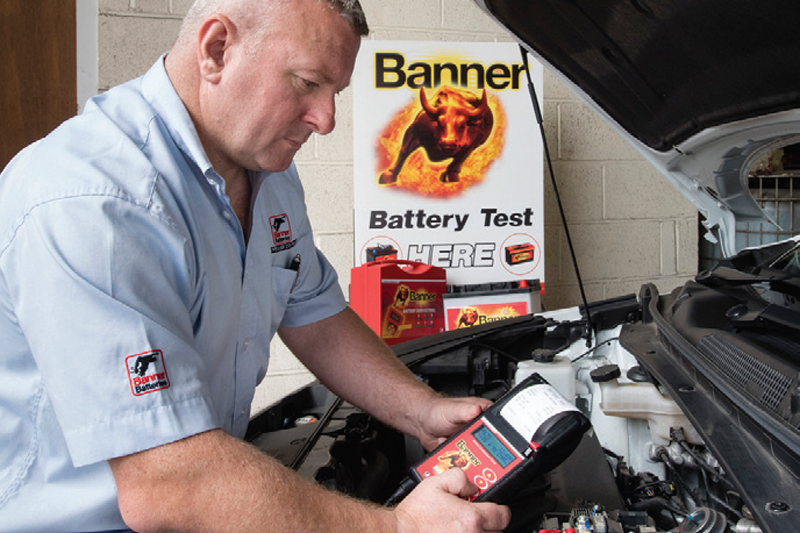
Russell Shea, Business Development Manager at Banner Batteries, outlines what you need to know about micro-hybrid battery technology.
As many in the industry acknowledge, the days of simply selling and fitting a standard automotive 12V lead acid battery are almost gone. Today’s landscape is very different, and this has been dictated by the introduction of micro-hybrid vehicle technologies, by which we are referring to start-stop and brake regeneration emission control systems designed to reduce CO2 output levels.
First introduced on high volume production vehicles in 2009, systems such as these led to the development of technologically advanced and modified forms of the conventional flooded lead acid battery – namely AGM (Absorbed Glass Mat) and EFB (Enhanced Flooded Battery). It is at this point that the one-size-fits-all rule began to wane. Quite simply, a start-stop car requires a start-stop battery. Should a standard battery be fitted, then it will experience damage and lose its capability to power the vehicle within a few months. Furthermore, an AGM powered battery can only be replaced by an AGM, whereas an EFB can be upgraded.
Battery finder
Against this backdrop and given that different cars require exacting battery technologies, most OE manufacturers have developed their own online system designed to make finding the optimum replacement battery for a specific vehicle quick and easy. At Banner’s portal – www.bannerbatteryfinder.co.uk – site visitors simply need to enter the relevant vehicle registration into a number plate-shaped window and the search facility does the rest.
Also featured is a login section within the website that can be personalised using a customer’s own branding, the aim being to deliver a unique and bespoke user experience. And, whilst the new online portal is cross platform compatible, be it on a computer, laptop, tablet or mobile device, a buttonshaped plug-in dongle remains available, which can be used to launch the homepage automatically on a computer or laptop screen.
The search results not only display the relevant battery for the particular vehicle in question, they also detail additional information in the form of the relevant part number, capacity, power rating and suggested selling price (SSP), including VAT.
A further click presents users with a table of extended technical information, such as the battery’s dimensions, layout, engine compartment location and an estimated time for fitting. What’s more, for those with login access, there are also comprehensive guides to full fitting details.
Battery management systems
Whilst having confidence in selecting the correct battery for the vehicle in question could not be more straightforward, this isn’t the end of the story. With an increased number of modern cars featuring a battery management system (BMS), it is imperative that this is reset at the time of replacement.
A BMS is designed to adapt the vehicle’s charging strategy based on battery status. The aim is to increase the availability of the startstop system with the detailed data evaluation of the battery and accurate control of the alternator output. The BMS uses information from a battery monitoring control module to measure and evaluate the physical battery variables of:
■ Temperature
■ Voltage
■ Charging current
■ Discharge current
The BMS control module calculates numerous battery parameters based on the data transmitted from the battery monitoring sensor and adapts the charging system accordingly. The data obtained by the sensor and processed by the control module allows the charge current, as well as the charge voltage, to be adapted to the charge and operating state of the battery.
So, with replacement batteries having different charging requirements to those that have reached the end of their serviceable life, the BMS must be reset when the battery is replaced to prevent the use of an incorrect charging strategy, which could result in:
■ Loss of start-stop system functionality
■ Increased CO2 emissions
■ Increased fuel consumption
■ Loss of non-critical system functionality
■ Premature battery failure
If a vehicle has a suspected battery or charging system fault, and to ensure alternators are not replaced unnecessarily, it is essential that accurate charging system testing is carried out. Due to the variations in the alternator output, based on the charge and operating state of the battery, it is not possible to accurately test the output from the alternator using traditional methods. The only way to accurately test the performance of the alternator is to interrogate the circuits connecting the control module and the alternator using an appropriate oscilloscope.









